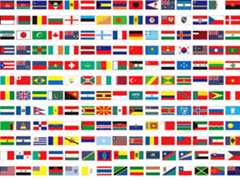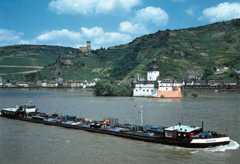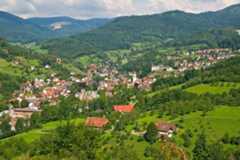- Germany from 1250 to 1493
Germany
Our editors will review what you’ve submitted and determine whether to revise the article.
- What continent is Germany located in?
- What is the capital city of Germany?
- Which languages are commonly spoken in Germany?
- Who is the current leader of Germany?
- What major historical events is Germany known for?
- How did the division and reunification of Germany occur?
- What industries are central to Germany's economy?
- How does Germany's government system work?
News•
Germany,country of north-centralEurope,traversing thecontinent’s main physical divisions, from the outer ranges of theAlps northward across the variedlandscape of the Central German Uplands and then across theNorth German Plain.
One ofEurope’s largest countries, Germanyencompasses a wide variety of landscapes: the tall, sheer mountains of the south; the sandy, rolling plains of the north; the forested hills of the urbanized west; and the plains of the agricultural east. At the spiritual heart of the country is the magnificent east-central city ofBerlin, which rose phoenixlike from the ashes ofWorld War II and now, after decades of partition, is the capital of a reunified Germany, and theRhine River, which flows northward fromSwitzerland and is celebrated in visual art, literature, folklore, and song. Along its banks and those of its principal tributaries—among them theNeckar,Main,Moselle, andRuhr—stand hundreds ofmedieval castles, churches, picturesque villages, market towns, and centers of learning andculture, includingHeidelberg, the site of one of Europe’s oldest universities (founded in 1386), andMainz, historically one of Europe’s most important publishing centers. All are centerpieces of Germany’s thriving tourist economy, which brings millions of visitors to the country each year, drawn by its natural beauty, history, culture, and cuisine (including its renowned wines and beers).

- Head Of Government:
- Chancellor:Friedrich Merz
- Capital:
- Berlin3
- Population:
- (2025 est.) 83,433,000
- Currency Exchange Rate:
- 1 USD equals 0.861 euro
- Head Of State:
- President:Frank-Walter Steinmeier
- Form Of Government:
- federal multiparty republic with two legislative houses (Bundesrat, or Federal Council [691]; German Bundestag, or Federal Assembly [6312])
- Official Language:
- German
- Official Religion:
- none
- Official Name:
- Bundesrepublik Deutschland (Federal Republic of Germany)
- Total Area (Sq Km):
- 357,596
- Total Area (Sq Mi):
- 138,068
- Monetary Unit:
- euro (€)
- Population Rank:
- (2025) 19
- Population Projection 2030:
- 84,888,000
- Density: Persons Per Sq Mi:
- (2025) 604.3
- Density: Persons Per Sq Km:
- (2025) 233.3
- Urban-Rural Population:
- Urban: (2018) 77.3%
- Rural: (2018) 22.7%
- Life Expectancy At Birth:
- Male: (2021–2023) 78.2 years
- Female: (2021–2023) 83 years
- Literacy: Percentage Of Population Age 15 And Over Literate:
- Male: 100%
- Female: 100%
- Gni (U.S.$ ’000,000):
- (2023) 4,563,534
- Gni Per Capita (U.S.$):
- (2023) 54,800
- Officially:
- Federal Republic of Germany
- German:
- Deutschland or Bundesrepublik Deutschland
- All seats appointed by local government.
- Current number of seats; statutory number is 598.
- Some ministries remain in Bonn. The federal supreme court meets in Karlsruhe.
The name Germany has long described not a particular place but the loose, fluid polity of Germanic-speaking peoples that held sway over much of western Europe north of the Alps for millennia. Although Germany in that sense is an anciententity, the German nation in more or less its present form came into being only in the 19th century, when Prussian Prime MinisterOtto von Bismarck brought together dozens of German-speaking kingdoms, principalities, free cities, bishoprics, and duchies to form theGerman Empire in 1871. This so-called Second Reich quickly became Europe’s leading power and acquired colonies inAfrica,Asia, and the Pacific. That overseas empire was dismantled following Germany’s defeat inWorld War I and theabdication of EmperorWilliam II. Economic depression, widespread unemployment, and political strife that verged on civil war followed, leading to the collapse of the progressiveWeimar Republic and the rise of theNazi Party underAdolf Hitler. After gaining power in 1933, Hitler established theThird Reich and soon thereafterembarked on a ruinous crusade to conquer Europe and exterminate Jews,Roma (Gypsies), homosexuals, and others.
The Third Reich disintegrated in 1945, brought down by the Allied armies of theUnited States, the United Kingdom, theSoviet Union,France, and other countries. The victorious powers divided Germany into four zones of occupation and later into two countries: the Federal Republic of Germany (West Germany) and theGerman Democratic Republic (East Germany),separated for more than 40 years by a long boundary. In East Germany this boundary was, until the fall of its communist government in 1989, marked by defenses designed to prevent escape. The 185 square miles (480 square km) of the “island” ofWest Berlin were similarly ringed from 1961 to 1989 by theBerlin Wall running through the city and by a heavily guarded wire-mesh fence in the areas abutting the East German countryside. AlthoughBerlin was a flashpoint between the United States and the Soviet Union during theCold War, the city declined in national and international significance until 1989–90, when a popular and peaceful uprising toppled the East German government and soon after restored a united Berlin as the capital of a reunified Germany.
Since World War II, Germany has made great efforts to bothcommemorate the victims and redress the crimes of theHolocaust, providing strong material and political support for the state ofIsrael and actively prosecuting hate crimes and thepropagation ofneo-Nazi doctrine; the latter became an issue in the 1990s with the rise in Germany of anti-immigrant skinhead groups and the availability of Hitler’sMein Kampf over the Internet. Clearly, modern Germany struggles to balance its national interests with those of an influx of political and economic refugees from far afield, especiallyNorth Africa,Turkey, andSouth Asia, an influx that has fueled ethnic tensions and swelled the ranks of nationalist political parties, particularly in eastern Germany, where unemployment was double that of the west. Tensions became especiallyacute in the second decade of the 21st century, when more than one million migrants entered Germany in the wake of the revolutions of theArab Spring and theSyrian Civil War.

The constitution of therepublic, adopted in 1949 byWest Germany, created a federal system that gives significant government powers to itsconstituentLänder (states). Before unification there were 11 West GermanLänder (including West Berlin, which had the special status of aLand without voting rights), but, with the accession of East Germany, there are now 16Länder in the unified republic. The largest of the states isBavaria (Bayern), the richest isBaden-Württemberg, and the most populous isNorth Rhine–Westphalia (Nordrhein-Westfalen).
Matters of national importance, such as defense and foreign affairs, are reserved to the federal government. At both the state and federal levels,parliamentary democracy prevails. The Federal Republic has been a member of theNorth Atlantic Treaty Organization (NATO) since 1955 and was a founding member of theEuropean Economic Community (seeEuropean Union). During the four decades of partition, the Federal Republic concluded a number of agreements with the Soviet Union and East Germany, which it supported to some extent economically in return for variousconcessions with regard to humanitarian matters and access to Berlin. West Germany’s rapid economic recovery in the 1950s (Wirtschaftswunder, or “economic miracle”) brought it into a leading position among the world’s economic powers, a position that it has maintained.

Much of Germany’s post-World War II success has been the result of the renowned industriousness and self-sacrifice of its people, about which novelistGünter Grass, winner of the Nobel Prize for Literature in 1999, remarked, “To be a German is to make the impossible possible.” He added, more critically,
For in our country everything is geared to growth. We’re never satisfied. For us enough is never enough. We always want more. If it’s on paper, we convert it into reality. Even in our dreams we’re productive.
This devotion to hard work has combined with a public demeanor—which is at once reserved and assertive—to produce astereotype of the German people as aloof and distant. Yet Germans prize both their private friendships and their friendly relations with neighbors and visitors, place a high value on leisure and culture, and enjoy the benefits of life in aliberal democracy that has become ever moreintegrated with and central to a united Europe.



















